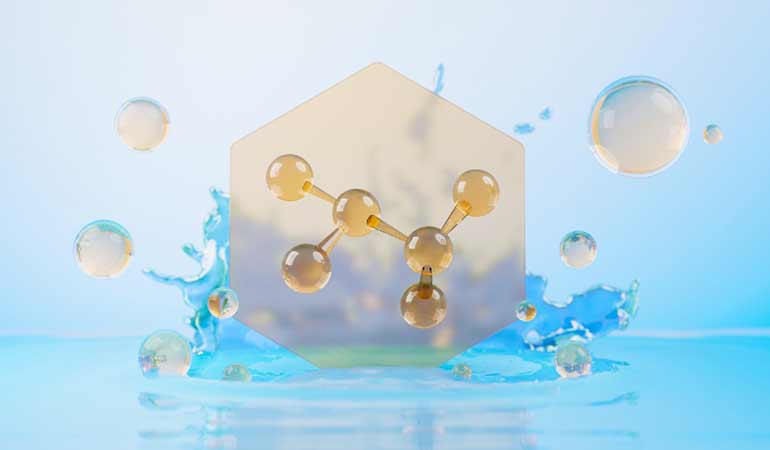Could ionocaloric cooling replace vapour compression?
4th January 2023
USA: Researchers at the Department of Energy’s Lawrence Berkeley National Laboratory have been experimenting with creating a refrigeration effect by using ions to drive solid-to-liquid phase changes.
The technique, which they have named ionocaloric cooling, takes advantage of how energy, or heat, is stored or released when a material changes phase – such as changing from solid ice to liquid water. The ionocaloric cycle causes this phase and temperature change through the flow of ions (electrically charged atoms or molecules) which come from a salt.
Other kinds of “caloric” cooling have been researched in the past, and continue to be investigated. These include magnetism, pressure, stretching, and electric fields to manipulate solid materials so that they absorb or release heat. Ionocaloric cooling differs by using ions to drive solid-to-liquid phase changes. Using a liquid has the added benefit of making the material pumpable, making it easier to get heat in or out of the system – something solid-state cooling has struggled with.
The Berkeley Lab scientists calculate that it has the potential to compete with or even exceed the efficiency of gaseous refrigerants found in the majority of systems today.
Running current through the system moves the ions, changing the material’s melting point. When it melts, the material absorbs heat from the surroundings, and when the ions are removed and the material solidifies, it gives heat back.
Experiments
In experimental demonstrations, the team used a salt made with iodine and sodium, alongside ethylene carbonate, a common organic solvent used in lithium-ion batteries. The first experiment showed a temperature change of 25ºC using less than 1V, a greater temperature lift than demonstrated by other caloric technologies.
“Using a material like ethylene carbonate could actually be carbon-negative, because you produce it by using carbon dioxide as an input. This could give us a place to use CO2 from carbon capture,” commented Drew Lilley, a graduate research assistant at Berkeley Lab and PhD candidate at UC Berkeley who led the study.
Researchers hope that the method could one day provide efficient heating and cooling and lead to the phase out traditional vapour compression systems.
“The landscape of refrigerants is an unsolved problem. No one has successfully developed an alternative solution that makes stuff cold, works efficiently, is safe, and doesn’t hurt the environment,” said Drew Lilley. “We think the ionocaloric cycle has the potential to meet all those goals if realised appropriately.”
Promising
Quoted on the Berkeley Lab website, Lilley’s colleague Ravi Prasher, a research affiliate in Berkeley Lab’s Energy Technologies Area and adjunct professor in mechanical engineering at UC Berkeley, said: “There are three things we’re trying to balance: the GWP of the refrigerant, energy efficiency, and the cost of the equipment itself. From the first try, our data looks very promising on all three of these aspects.”
While caloric methods are often discussed in terms of their cooling power, the cycles can also be harnessed for applications such as water heating or industrial heating. The ionocaloric team is continuing work on prototypes to determine how the technique might scale to support large amounts of cooling, improve the amount of temperature change the system can support, and improve the efficiency.
“We have this brand-new thermodynamic cycle and framework that brings together elements from different fields, and we’ve shown that it can work,” Prasher said. “Now, it’s time for experimentation to test different combinations of materials and techniques to meet the engineering challenges.”
Lilley and Prasher have received a provisional patent for the ionocaloric refrigeration cycle, and the technology is now available for licensing by contacting [email protected].







